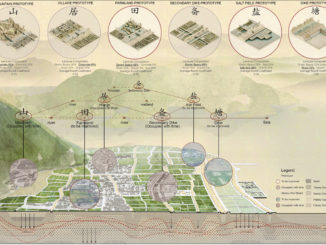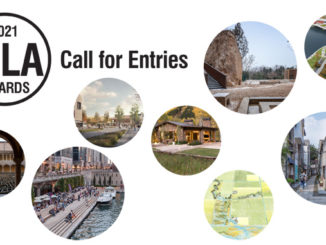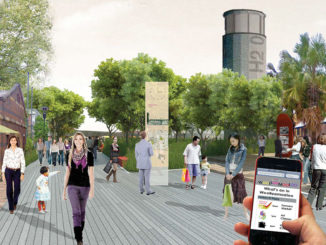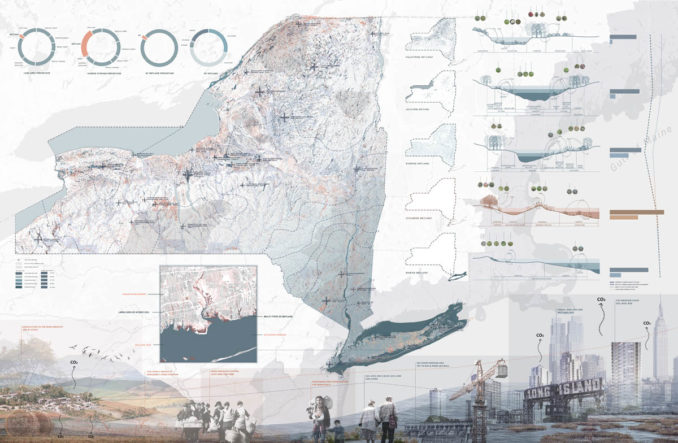
As more carbon has been released into the atmosphere, climate change leads to a series of threats to the living environment. The project, which is based on the research of carbon flow in the landscape, tries to explore the methods to deal with the climate change impacts and vulnerable population social issues to bring more value to society.
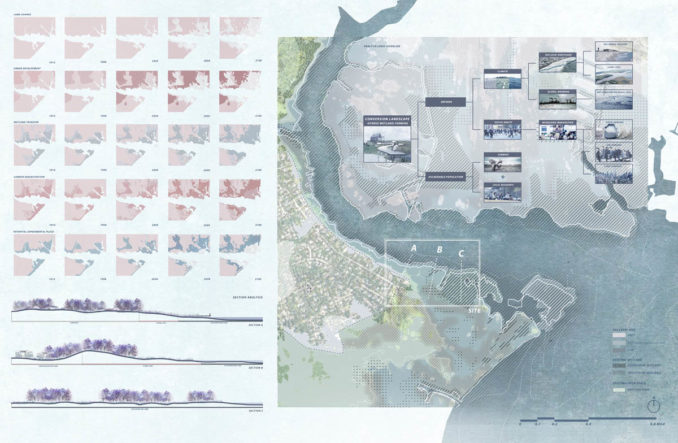
Through the research, wetlands have the highest carbon sequestration efficiency compared to other types of green land. However, the disappearance of wetlands will lead to a larger quantity of carbon emissions due to climate change. The conflict between wetland protection, urban expansion, and agricultural needs are inevitable, especially along seashore areas. With the increasing rate of immigrants, food and job demands along with land loss issues drive people’s attention. With thoughtful mapping analysis, the research site was chosen in the shoreline area of Long Island, New York state.
The design purpose is to create a hybrid wetland-farming conversion landscape, which also aims to benefit carbon-removing, for adapting to the premise future threats. The main design strategy challenges traditional landscape design logic, that using design methods to prevent future threats. Using the premise threats, like the sea-level rise, as the driving power to provide potential opportunities for wetland and farmland expansion in the urban context.
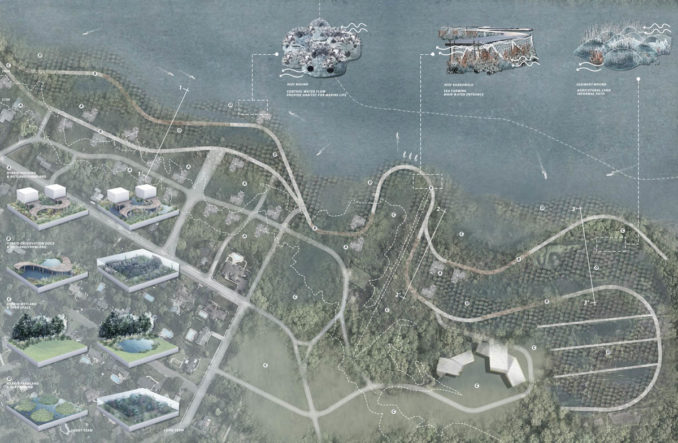
The design utilizes the existing open space as the migration route for the hybrid landscape. Based on the analysis, four prototypes of a hybrid landscape with three layers of minor topo transformations are proposed to deal with the premise of future threats and social needs. The minor topo design helps to reduce estuary erosion, capture sediments, reshape the landform, and create a safe-zone water area to boost more hybrid function land. The hybrid landscape design provides different activities both in the short-term and long-term time periods.
In short-term design, farmers will work with the communities who live along the shoreline to plan for wetland farming. Large areas of wetland farming will be built using salt-tolerant plants and topographic engineering. Wetlands help to improve soil fertility for the farmland, which benefit the farmland’s productivity. The multi-functional built observation dock and public market buildings on stilts in the wetland bring both social and ecological values.
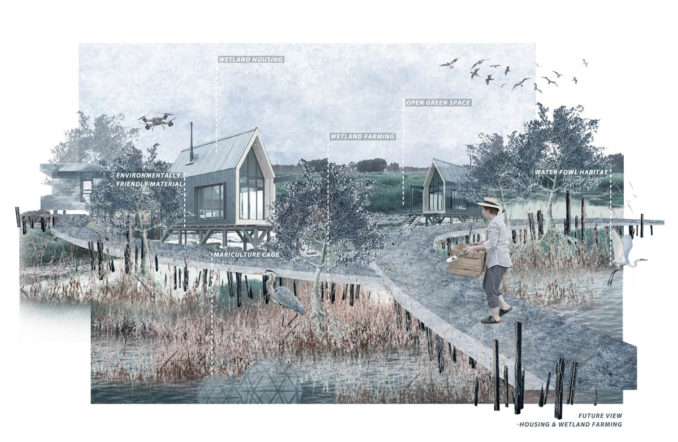
In long-term design, seawater flows in and makes part of structures and wetland areas under the water. Wetland farming will convert to sea-farming. The original underwater structure for docks and buildings will be used to raise seafood with webs and cags. Farming could be adjusted with high flexibility depends on sea-level rise. More in-water housing and in-wetland buildings will be created, and people will finally learn about how to coexist harmoniously with the ocean and nature.
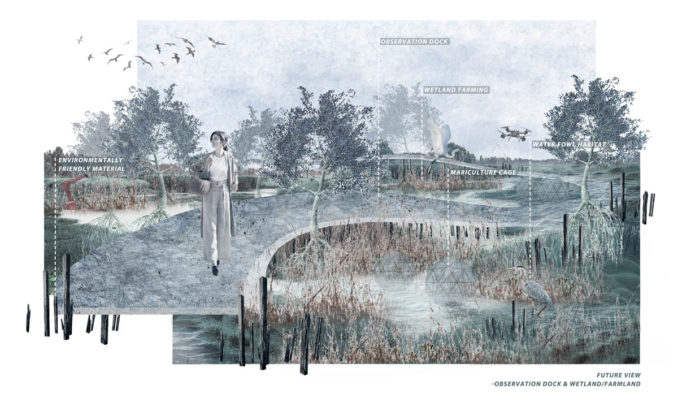
The design prototype concept is to use a hybrid design strategy to adapt to threats over time. Although the future is unpredictable, designing with the future scenario that transforms the premise threats as the driving power is tested in this project.
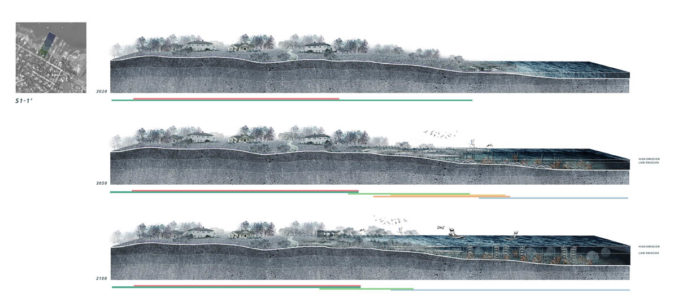
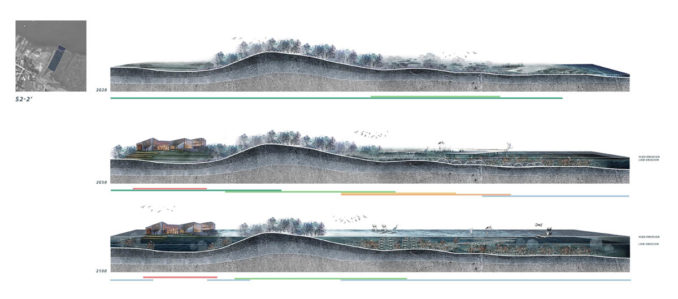
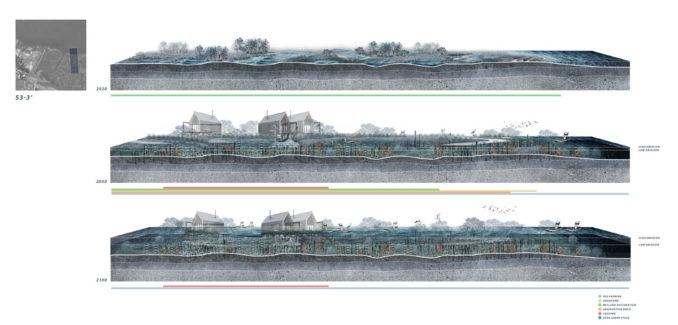
Hybrid wetland farming
Student/s Names: Liang Shi and Xuan Zhang, Cornell University
Observer/Supervisor: Jamie Vanucchi

